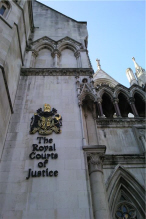Hazard warnings
- Details
 A recent Court of Appeal case involving a local authority will be of interest to practitioners who handle slip-and-trip claims, writes Vaughan Jacob.
A recent Court of Appeal case involving a local authority will be of interest to practitioners who handle slip-and-trip claims, writes Vaughan Jacob.
In Butcher v Southend-On-Sea Borough Council, CA (Civ Div), 30/10/14 B was walking along a tarmac path outside sheltered housing accommodation owned by the local authority. There was difference in levels between the tarmac path and an area of grass running alongside the path. B stepped half on the path and half on the grass and fell sustaining personal injury. The local authority inspected the area after the accident and concluded that the dry weather had caused the earth to shrink from the edge of the path. The local authority then instructed contractors to fill in the drop with soil to bring the surrounding area up to the level of the path.
At first instance the Judge found that it was foreseeable that someone might lose their footing at the edge of the path because of the change in levels. The defect was obvious and could easily have been repaired. The Judge found that the local authority was in breach of its duty as an occupier. B was found to be 50% contributorily negligent because the hazard would have been seen by someone paying attention.
The local authority appealed, arguing that the Judge had given insufficient weight to their reasonable system of inspection and risk assessment which they believed absolved them of liability.
The Court of Appeal held that the issue of a system of inspection was relevant where a hazard suddenly developed, such as a spillage of oil, or yoghurt in the case of Ward v Tesco [1976] 1 WLR 810. However the hazard in this case had not developed suddenly and nor was it the kind of hazard which required a professional risk assessment, as with the risk of branches falling from trees (Bowen v National Trust [2011] EWHC 1992 (QB). Instead it was hazard that was plain to see and was present for some time.
The Court of Appeal held that the question facing the trial judge at first instance was: before the accident was it forseeable that someone would step off the path and lose their footing because of the drop? The Judge at first instance was not wrong to find the injury was forseeable and find that the local authority had not taken such case as was reasonable in all the circumstances to see that visitors were reasonably safe. There was no error of law and the appeal was dismissed.
Vaughan Jacob is a barrister at Lamb Chambers. He can be contacted
Must read
Local authority legal teams after Mazur
Antisocial Behaviour Legal Officer
Regulatory/Litigation Lawyer
Locums
Poll























